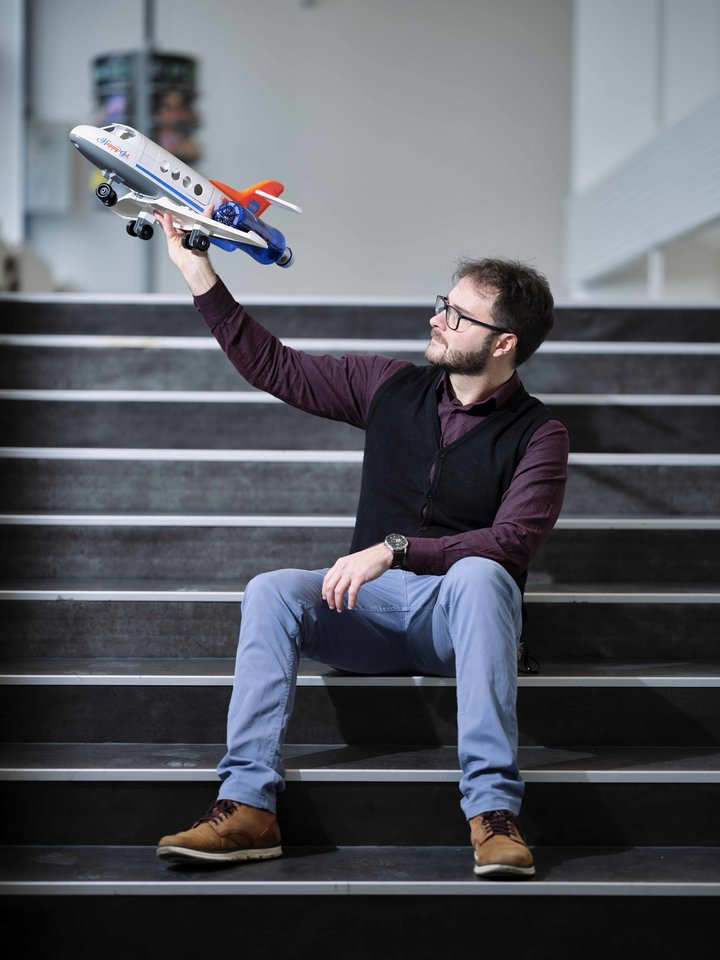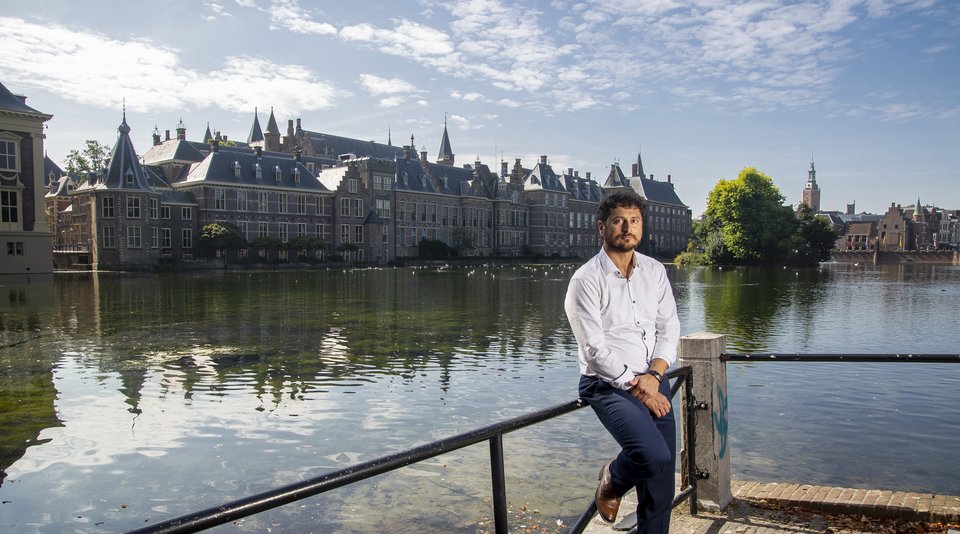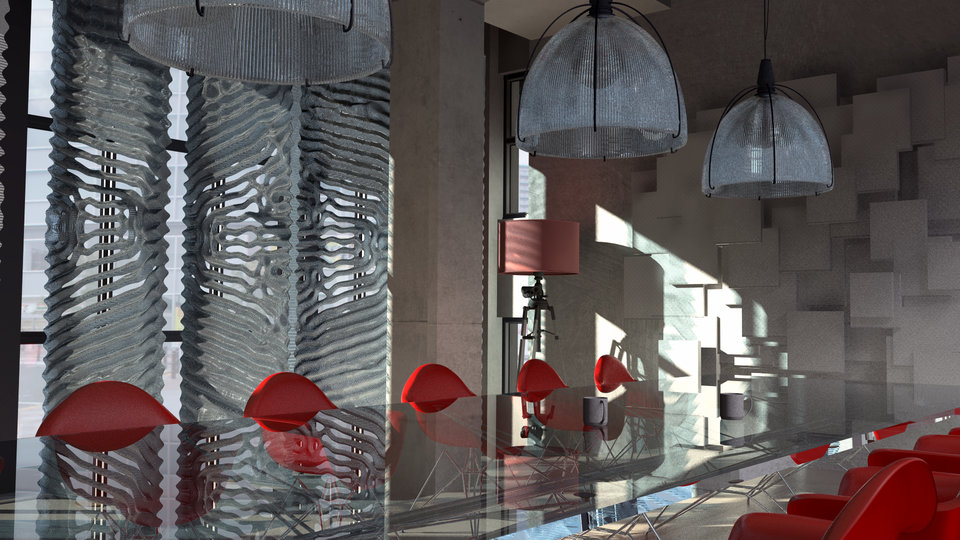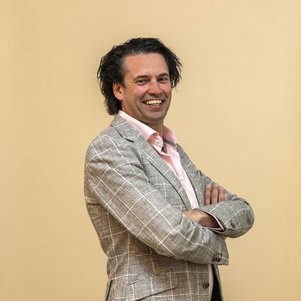In its Climate Agreement, the Dutch government aims to reduce CO2 emissions by as much as 49% compared to 1990-levels by the year 2030. That’s a laudable aim, says solar energy professor Arno Smets, but achieving it will be a major challenge. ‘It’s difficult to estimate how much reduction in CO2 emissions each measure will actually deliver.’
Arno Smets clearly sees the Climate Agreement as a positive step forward. He pays tribute to the fact that, with this agreement presented at the end of June, the Dutch government is accepting its responsibility in the global challenge of the 21st century. He is also gratified to see the same government take the first far-reaching policy steps towards reducing the emission of greenhouse gases.
But there is still something troubling TU Delft’s solar energy professor. Will it really be enough? ‘I fear not,’ says Smets. ‘The energy transition is an extremely complicated political, administrative, economic, social and technological challenge for our society. Although some measures will definitely deliver better results than anticipated, achieving other key targets will not prove so easy or predictable in practice. That could quickly put the 49% reduction at risk.’
Mission Innovation Champion
In the spring of 2019, Arno Smets has been named as one of the first Mission Innovation Champions. Mission Innovation Champions is a new initiative to honour pioneers in the field of clean energy. The programme is part of Mission Innovation, a coalition of countries that agreed to accelerate their efforts in the field of energy innovation at the Paris Climate Summit. Arno Smets was chosen because of the impact of his teaching and research on the energy transition. ‘Climate change is the greatest threat to humanity. I believe we can develop sustainable energy systems that allow us to live in harmony with the planet. But we also need to change people's mind-sets and educate the world,’ Smets says.
Unreliable energy sources
In his own research on solar energy, Smets has seen renewable energy production develop at an unimaginable pace. The production and upscaling of solar panels is happening much faster than everyone expects. Solar panels are being produced in Asia at bargain prices, making them available for less affluent households even in the Netherlands. And whereas the 2013 Energy Agreement did not feature even a single section on solar energy, in the 2019 Climate Agreement it has developed into one of the key pillars in the fight to tackle the climate issue.
‘Despite this, I can still see huge obstacles that we will need to surmount before solar energy can really become part of a sustainable energy supply,’ says Smets. ‘This is because wind and solar energy are still relatively unreliable sources of energy. A coal-fired power station is adjustable: you increase its output if you need more power. But with clean energy, you’re completely dependent on the wind and sun: when the wind drops and it’s cloudy, production is too low to meet the demand for energy.’
Tesla powered by grey energy
Another problem is the fact that electricity is difficult to store. Technically, it’s not yet really possible to store solar energy from the summer for the darker days of winter. This means we’re still largely dependent on grey energy for now, says Smets, which again has serious repercussions for other sustainability measures. ‘Take electric driving, for example. With government subsidies, you can certainly ensure that more Dutch people start driving electric cars in the short term, but what benefit will that have if all of the Teslas need to be charged using electricity from coal-fired power stations?’
Finally, but equally importantly, the integration of large-scale solar parks could be delayed. A solar park is a collection of a large number of solar panels that can quickly generate a lot of electricity locally. Smets: ‘In recent years, the government has been generous in offering subsidies for these parks, but the initiators struggle to find other investors. Grid operators can sometimes find it difficult to make the necessary expansions to the electricity network to keep up. What’s more, we’ll face a real shortage of electricians to install solar panels if this market continues to grow.’
Integrated approach
Smets’ basic message is that solar energy is currently not yet a miracle cure. Existing scenarios may predict a key role for solar energy in the global energy transition, but all kinds of conditions will first need to be met for that to be achieved. According to Smets, the key is to pursue an integrated approach, because solar energy can only become a success with a good electricity grid, better opportunities for storage, sufficient investors and fitters, space for solar parks, social acceptance, etc. The success of any solar revolution in the Netherlands will depend on all of these factors. ‘Things could progress quickly or slowly, which makes it difficult to make useful predictions. Currently, we just don’t know how much CO2 reduction every euro you invest will deliver.’
When he refers to an integrated approach, Smets means that all stakeholders take responsibility for achieving a smooth energy transition. An example: the last two years have seen a slight drop in worldwide investments in renewable energy. This lack of investment could prove an obstacle for the energy transition. ‘I recently checked and my own pension fund, for example, invests only 1.3% of the budget in renewable energy. That’s nowhere near enough to achieve all these projects.’
Raising awareness
However uncertain the solar revolution may be, solar panels are good for one thing at least: raising awareness. ‘All of us want to use electric devices and appliances, so we can use WhatsApp and watch Netflix. But we are unaware of the complex world behind the wall socket. How is electricity produced, what is its impact on life on Earth and why isn’t it done completely sustainably? We don’t ask ourselves these questions often enough. But if you have a few solar panels on the roof, this electricity production suddenly becomes much more tangible: you can actually reverse the dials in your meter cupboard!’
This helps consumers to understand the ethical issue that the energy transition really is. In that respect, the energy sector is quite similar to other sectors of industry, such as the clothing industry. We like to buy cheap T-shirts, but never wonder about the conditions in which they are manufactured. And we certainly don’t want to see these poor conditions in our backyard, any more than we want to see wind turbines or large solar parks. But in a small and busy country like the Netherlands, there’s no escaping the fact that the energy transition will make visible changes to our surroundings, feels Smets. If we want to make the transition to renewable energy, we need to be willing to make sacrifices.
MOOC’s
Solar energy professor Arno Smets has already reached hundreds of thousands of viewers with his MOOCS (Massive Open Online Courses). He has even inspired his viewers to install their own solar panels in places where there is poor electricity supply. Smets’ online lectures are popular because of his lively style of presentation. But, of course, the topic also appeals to lots of viewers. ‘When we started, no MOOC had been made about solar cells. We explain how solar power works and explore the fundamental principle of photovoltaic (PV) energy conversion. How do you convert solar energy into electricity? We demonstrate how the technology works and how you can build a modest system yourself. There’s a lot of interest in sustainability and this appeals to lots of people.’





